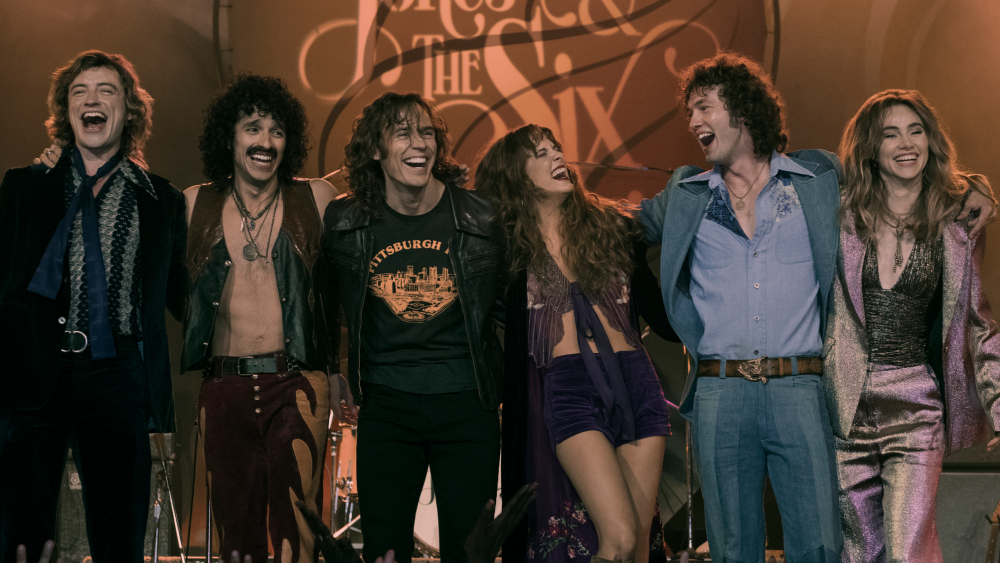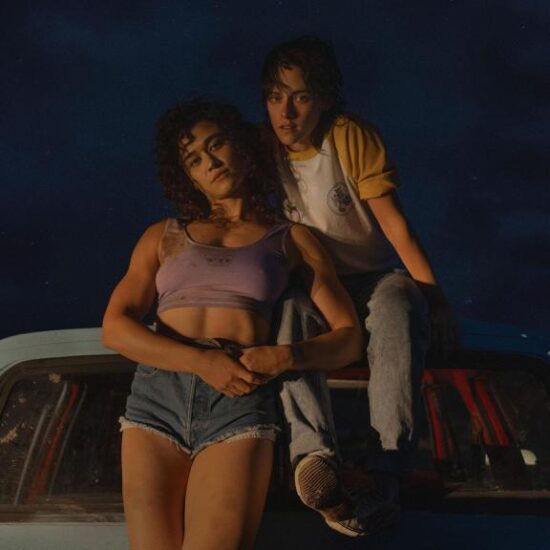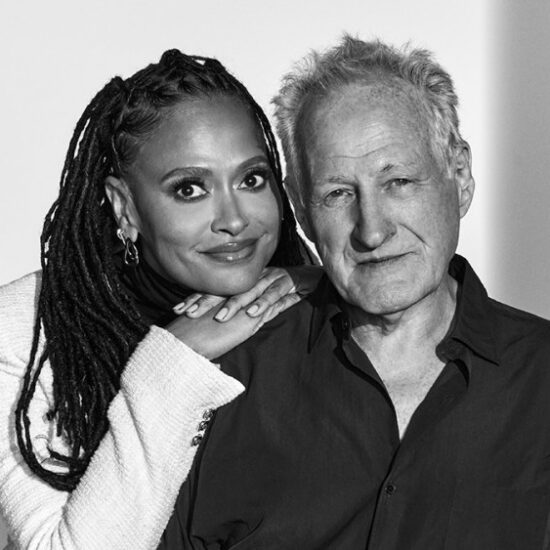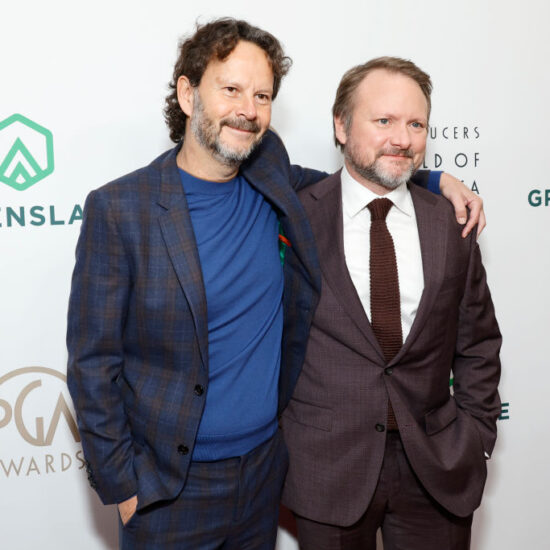
“As an actor to have people come up and say ‘I listened to your record,’ is very bizarre,” Riley Keough said at the recent Prime Video “Daisy Jones & the Six” FYC panel in Los Angeles.
Keough’s co-star, Sam Claflin elaborated on how the confusion often transferred to the audience too, “No one really understands or believes that it is us playing — and that we can.” Keough and Claflin shared how as actors they trained for months to become the fictional star-crossed musicians, Daisy Jones and Billy Dunne, from the TV adaptation of Taylor Jenkins Reid’s “Daisy Jones & the Six.”
The limited series follows the fictional 1970s rock band, Daisy Jones & the Six, as they wrestle with the tumult of Southern California rock ‘n roll, engage in vicious fights, complicated love triangles and affairs, all while they rise to meteoric fame that abruptly comes crashing down.
While fans — and the cast members’ friends and family — may not believe it’s really the actors-turned-singers performing each song, it was revealed they attended band camp for months in preparation. Before filming and outside their intimate rehearsals, the group had to perform for the first time as a band for the series’ executives; and Claflin cheekily remarked how it caused a wave of nerves to hit the performers, leading him to request music supervisor Frankie Pine to “run to the liquor store” before their official debut.
“Going up on stage and performing for people was a very different experience. We’d been playing for each other for months,” said Keough. “But to then do a real live performance for the first time was a whole different ballgame.”
But their first performance wasn’t possible without the help and direction from Pine, who insisted the actors partake in their very own “band camp.”
“The point of band camp was to make it feel that you guys saw each other every day, worked together every single day and that’s what an actual band does.”
“That’s why you see this incredible togetherness as a band. You know when somebody’s going to start playing that lick and when somebody’s going to come in and sing their line. Being in band camp was one of the main reasons why we brought everybody together and we did it for so long,” said Pine. “There was a reason behind all of it.”
Claflin, the series (and the band’s) leading man, also shared that all their preparation in band camp may allow fans to reap the benefits in person very soon, teasing at the possibility of touring as a band. “We would love to be able to prove that to you one day.”
With a live tour a promising possibility, Claflin and Keough expressed their preparation resembled that of Billy and Daisy’s, as strangers they were immediately thrust upon each other to intimately yell and sing together in close proximity. “Actually thinking back to the first time Riley and I have a singing lesson together, we were told to stare at each other in the eyes — really closely. The two of us could not get through it without laughing at each other mostly,” said Claflin.
Keough quickly added, “We had barely spoken and they had us start yelling at each other.”
While initially awkward early rehearsal sessions, their friendly dynamic quickly developed into on-screen chemistry. Camila Morrone, who stars as Billy’s wife, Camila Dunne, praised her cast mates for their palpable chemistry. “I wasn’t around for [filming] the Daisy and Bailey scenes, but you guys have so much chemistry. I was like ‘Maybe they should be together,’” said Morrone. “I never saw you guys act together, then I watched the show, and I was like ‘Wait, they are great together.’”
As a secret supporter of Daisy and Billy, Morrone explained to the FYC audience that although her first rehearsals — or any for that matter — didn’t involve singing, she and Claflin also had to navigate the awkward immediate intimacy. While they weren’t performing together, they were presented their own intimate sequences and were instantly “thrust into becoming a married couple, who are in love with a baby.”
“I wasn’t in band camp for a year and a half so I didn’t get to bond with them and the way that they all came in all buddy-buddy like they had done summer camp together,” joked Morrone. “I was like, ‘Hey, guys, I want to be in with the cool kids!’”
“But, there was a moment where [Sam and I] looked at each other and I was like, ‘Sam, anytime you need me to do something different, you just tell me what you need,’” added Morrone, “We just had a free range and promised that we would be there for each other, trust each other and hold each other.”
That trust wasn’t reserved exclusively for the cast, but the production crew members also facilitated an open and ongoing collaboration. Keough praised “Daisy Jones” costume designer Denise Wingate for welcoming recommendations and requests from the cast, including Keough’s idea for Daisy’s final performance costume.
“We couldn’t figure out what the dress should look like. I can honestly say every time we [had] a fitting [Riley] was like, ‘What am I going to wear in the last concert?’” said Wingate.
Keough recalled for the audience how she and Wingate selected and finalized that final showstopping ensemble. “I was sitting on set and then ‘Gold Dust Woman,’ the Fleetwood Mac song, came on, and it was playing quietly and I was like, ‘That’s it.’ I texted [Denise] and I was like, ‘It should be like what ‘Gold Dust Woman’ looks like.’”
Wingate chimed in, “You called and were like ‘Gold Dust Woman,’ that’s the final outfit.’ And I was like, ‘That’s it! Eureka!’ It was brilliant. Then we had the time to be able to find the perfect outfit.”
As Wingate and Keough, drew inspiration from Fleetwood Mac and Stevie Nicks, Nabiyah Be, who portrayed disco sensation and Daisy’s closest friend, Simone Jackson, researched and studied the 1970s’ disco pioneers Diana Ross, Donna Summer and Chaka Khan. Be noted she quickly discovered how American counterculture enabled disco to run concurrently with the rise of Southern California rock ‘n roll. “It was a whole universe getting to know the social political aspect and how that translated into the music as well.”
“I had to do a lot of work in making sure that I sounded like an American singer from the 70s,” added the Brazilian-born performer. “Making sure that I was respectful to both the history of those women and the way they sound and move.”
Creating and becoming Simone was reliant on Be’s keen ability to embrace her character’s love story with another woman of color, Bernie (Ayesha Harris). Be explained, “The most rewarding feedback that I’ve gotten is from the queer community, with people being, actually, surprised to have seen a joyous black sapphic couple owning their truth and putting new forms of art into the world. It’s really meaningful for us, because we don’t get to see that a lot.”
Morrone agreed, adding how she has been approached by women from different generations expressing their adoration. “I have 13-year-old girls that are diehard Daisy Jones fans and then women in their seventies who are like ‘This show reminds me of the 1970s’ or ‘It really took me back.’ It’s incredible the amount of people [at different ages] that this has touched. I’ve never quite seen a project have such a big, big reach.”
“I have a really sweet thing that’s weirdly happened four times now, girls come up to me and say that they watched it with their mothers,” said Keough. “I found that really touching that ‘Daisy Jones’ was this bonding moment for many young women and their mothers to watch together.”
All episodes of “Daisy Jones & the Six” are available on Amazon Prime Video.
Watch the video above for the full conversation.













